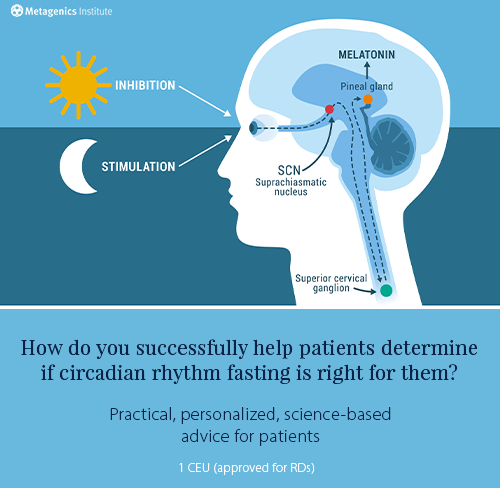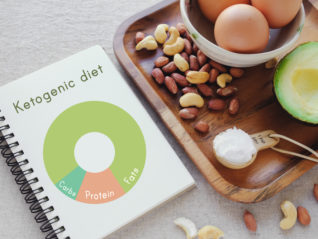
by Bianca Garilli, ND
Ketogenic protocols have become an important therapeutic option for a variety of health issues including weight management, cardiometabolic dysfunction, and epilepsy.1 The potential of the ketogenic diet (KD) to help optimize body mass has important implications for the reduction of metabolic syndrome and its related chronic disease aspects such as heart disease, fatty liver, and type 2 diabetes (T2D).
Additionally, the ketogenic dietary approach has gained widespread attention within the professional sports performance and wellness communities for its ability to enhance weight loss and optimize body composition, both critical components in accomplishing training goals for this population.2-3 However, concerns exist in the sports performance community regarding the impact of a KD, including the possibility that lowering total body mass may reduce the ability of an individual to optimize muscle hypertrophy through resistance training (RT) due to increased central fatigue and other related factors.3
To learn more about the effects of a KD in combination with RT, a randomized, controlled, parallel arm, prospective study was conducted, with results published in the Journal of International Society of Sports Nutrition.3 The study’s authors hypothesized that, “a KD with caloric surplus in combination with RT in trained men would have a positive impact in fat reduction, and it would benefit the gains in lean body mass (LBM)”.3
Healthy, athletic men (N=24) from Spain (average age: 30, weight: 76.7kg, BMI: 23.4) with at least 2 years of continuous overload training experience were randomized into 1 of 3 groups: KD, non-KD, or control group.3 The participants followed their approved diets for 8 weeks along with supervised hypertrophy training protocol 4 days/week: 2 days of upper body and 2 days of lower body workouts. The KD group was monitored weekly by measuring urinary ketones with reagent strips to ensure they achieved and remained in ketosis. Body composition was assessed using DXA.
Participants all consumed a similar number of calories, which was set for a moderate energy surplus of 39 kcal/kg/day.3 The KD group consumed 20% of calories as protein (2g/kg/day), 70% as fat (3.2g/kg/d), and <10% of their calories as carbohydrates (approximately 42g/d).3 The non-KD consumed the same 20% of calories as protein (2g/kg/day), 25% as fat, and the remaining 55% as carbohydrates.3 Both groups were encouraged to eat 3-6 meals per day, and individuals in the control group were asked to maintain their current exercise and dietary routines throughout the study.
Results:3
- KD: ↓ fat mass (FM) and ↓ visceral adipose tissue (VAT); non-significant reduction in total body weight; non-significant increase in lean body mass (LBM)
- Non-KD: No significant changes in FM or VAT; significant ↑ in total body weight and ↑ LBM
- Control: No significant changes in FM, VAT, total body weight, nor LBM
The overall results indicate the KD intervention was able to achieve a positive change in body composition with a decrease in body weight (non-significant) and reduction in FM and VAT.3 LBM did not increase significantly in the KD group, and the results indicate that LBM may be enhanced through an adequate carbohydrate intake (as was provided in the non-KD and control group diet protocols of this study) while also consuming a calorie surplus with a higher protein intake to support muscle hypertrophy.3
In summary, the implementation of a KD in male athletes taking part in regular resistance training may lead to lowering of VAT and FM, both important factors for body mass optimization and reducing risk of cardiometabolic disease processes.3 However, the lack of lean body mass accrual in this study indicates that the KD may not be an optimal strategy for building muscle mass in trained athletes when utilized alongside a resistance training program.3 Longer study duration with larger samples, both genders, and less fit individuals (e.g. overweight) would be valuable for further exploration.
Why is this Clinically Relevant?
- KD in trained men combined with resistance training protocols may improve VAT and FM levels, both risk factors for cardiovascular disease3
- Trained men desiring to increase LBM and increase muscle hypertrophy may need to consider a dietary approach which includes a calorie surplus with high protein content along with adequate carbohydrate intake
Citations
- Paoli A et al. Beyond weight loss: a review of the therapeutic uses of very-low-carbohydrate (ketogenic) diets. Eur J Clin Nutr. 2013;67(8):789–796.
- McSwiney FT, Wardrop B, Hyde PN, Lafountain RA, Volek JS, Doyle L. Keto-adaptation enhances exercise performance and body composition responses to training in endurance athletes. Metabolism. 2018;81:25-34.
- * Vargas S, Romance R, Petro J, et al. Efficacy of ketogenic diet on body composition during resistance training in trained men: a randomized controlled trial. J Int Soc Sports Nutr. 2018;15:31.
*Note: In the Vargas S et al. 2018 article, there are discrepancies in body composition outcomes in the written Results section of the article, however, the quantitative results in Table 2 and the Abstract are correct and are summarized above.







